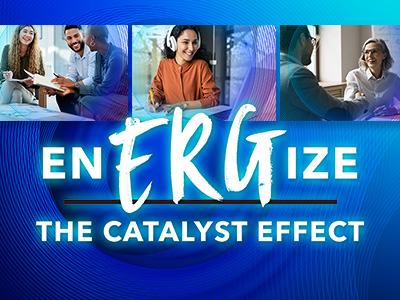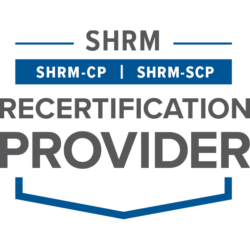
ERG Resources From Catalyst
Strengthen your organization’s diversity, equity, and inclusion (DEI) initiatives with effective ERG programs and resources to help align ERGs to business goals.
What are ERGs?
![]()
Employee Resource Groups (ERGs) are voluntary, employee-led groups based on shared characteristics or experiences and provide a platform for employees to connect, share ideas, and work together to address workplace issues. ERGs may also be known by different names—Affinity Groups, Business Resource Groups, Diversity Groups, Employee Network Groups, Business Network Groups, Enterprise Resource Groups, Councils, Forums, and more—depending on the organization and focus.

ERG impact at the workplace
![]()
ERGs offer numerous benefits to organizations and help promote DEI in several ways, including:
- Building community: ERGs are a safe space for employees to connect with others that share their identity or experience and foster a sense of community and belonging.
- Provide resources: ERGs can provide the support and resources employees need, including career development opportunities and mentorship programs. ERGs can help employees from marginalized groups level up and obtain some of the benefits other employees have traditionally have enjoyed.
- Advocating for change: ERGs can be champions for change within an organization. This includes raising awareness on bias, developing DEI programs and strategies, employee recruitment and retention, and an engaged talent pipeline for advancement.
- Impacting the business: ERGs can help businesses understand cultural and regional differences. They can also help build meaningful relationships with community partners that align with the company’s values, leading to a more inclusive future for all.
Types of ERGs
![]()
While ERGs vary from one organization to another, here are some of the most common types:
- Gender-based ERGs: These groups focus on supporting and empowering members and allies based on gender identity or expression.
- LGBTQ+ ERGs: These groups provide support and advocacy for LGBTQ+ employees and work to create an inclusive workplace, raise awareness, and address issues related to LGBTQ+ rights.
- Ethnic and Cultural ERGs: These groups aim to support employees from various backgrounds, nationalities, or cultural identities. They may promote cultural awareness, provide networking opportunities, and celebrate diversity.
- Parents and Caregivers ERGs: These groups provide support and resources for caregivers and working parents. They focus on issues relating to work-life balance, parental leave policies, child and senior care, and provide resources and networking opportunities.
- Ability ERGs: These groups support and advocate for employees with disabilities and neurodivergent individuals. They focus on awareness and education, advocacy for policies and practices, job accommodations and support, and social events and networking that support neurodivergent individuals.
ERG Resources
Catalyst has everything you need to succeed with ERGs, whether you’re an experienced ERG leader, member, executive sponsor, an HR or DEI practitioner, or someone interested in starting or revamping ERGs at your organization. Our Supporter Organizations get access to the following resources:
Best Practices From Catalyst Award-Winning Initiatives
An interactive tool to help you learn how ERGs benefit your organization and create a more inclusive workplace.
Practices
150+ organizational practices to help tackle DEI and business challenges, including those from Catalyst Award winners.


Attend enERGize 2025
Join 900+attendees at enERGize, a half-day virtual event focused on creating, transforming, and empowering employee resource groups (ERGs).
ERG leaders, members, sponsors, and DEI practitioners will learn to build cost-effective ERGs that drive inclusion, employee engagement, and retention in a shifting labor landscape.
Gain Certifications
Catalyst is recognized by the Society for Human Resource Management (SHRM) to offer Professional Development Credits (PDCs) for SHRM-CP®️ or SHRM-SCP®️ recertification activities.
Attendees gain 4.75 PDCs towards recertification!

At our online enERGize event on June 7, 2023, the chat exploded with dynamic comments and questions posed by participants. We answered as many questions as we could in real time. Below are several additional questions, along with answers from our Catalyst team of subject-matter experts.

Get in Touch
![]()
Contact your Relationship Manager to learn how to unlock the full potential of ERGs in your organization and create a more inclusive workplace culture.
